
Installations and equipment are an important part of underground structures. They are complex, and usually comprise a quite large part of the general budget and planning of the whole structure.
Installations and equipment for underground facilities can be of very different nature, depending on the use of the future infrastructure. Some of the most common installations are:
Installations for traffic control 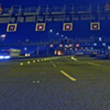
Road signs, traffic lights, traffic guide equipment, traffic census, height control, video monitoring, etc.
Installations for telecommunications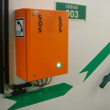
Service telephones, radio communication, equipment for emergency calls, etc.
Ventilation 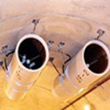
Ventilation aims at controlling levels of pollution, maintaining a good visibility and in case of fires securing the escape routes, allowing the entrance of rescue teams and reduce the damage to the structure. There exist different systems of ventilation. The most basic one is ventilation done naturally by pressure difference at the portals. More developed systems comprise mechanical ventilation by means of fans along the tunnel (longitudinal ventilation), and using special pathways where fresh air is pulsed and eventually polluted air is collected (transverse ventilation).
Safety systems 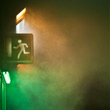
Sensors might be place to control the levels of visibility, pollution, smoke, temperature, humidity, and activate ventilation and/or cooling systems to bring back the situation to a comfortable zone.
Illumination systems 
Road tunnels must be sufficiently illuminated. The density of illumination must also be calculated so that there is an acclimatization of the sight of drivers coming from open air (normally with more ambient light) and going out of the tunnel afterwards.
Impermeability systems 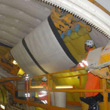
The interaction of a tunnel with the groundwater is of capital importance. Depending on the hydrological, mechanical and environmental conditions, a good design must be made to deal with the groundwater.
Two systems of water management exist:
- Tunnels completely impervious: This situation provides a totally water-tight tunnel where groundwater is unable to penetrate. This is a suitable solution for cases where environmental reasons suggest the groundwater is neither polluted nor depleted, when the groundwater pressure is too high, when the water is too basic (limestone) and can clog a normal drainage system too often, etc.
- Tunnels with a drainage system: This design provides a water-tight crown and walls where the water cannot penetrate the tunnel, but allows the groundwater to percolate by gravity at both sides of the tunnel where it is collected by transversal drains and a main longitudinal pipe along the tunnel. This solution is recommended in general when low levels of water are present and a good control of the drainage system is assured.
Drainage systems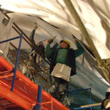
Inside of an underground structure water might appear on a constant basis, and drainage systems assure this water is collected and evacuated. Drainage is not only needed for groundwater when the tunnel is not supposed to be totally watertight, but also for day water (e.g. snow brought by traffic or rain from the portals) and service water (cleaning). Drainage can be done by using either a mixed system where all water is put together, or using a separate system or “dual drainage” system. The drainage system for groundwater must be designed along with the impermeability system of the tunnels.
(Source: Tunnelling and tunnel mechanics – Prof. Dimitrios Kolymbas, Springer)